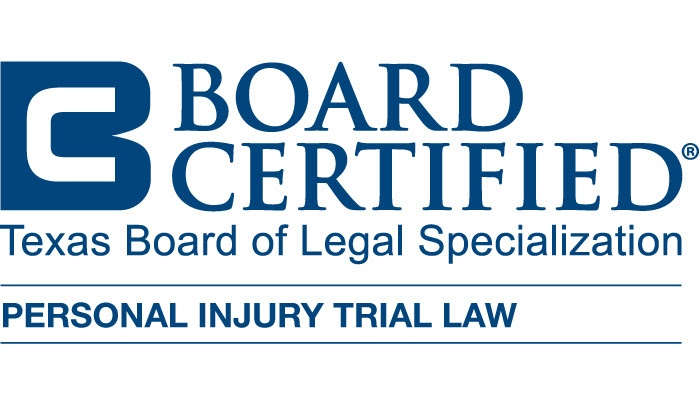When a person is injured due to the carelessness or wrongful actions of another, the legal path to seeking compensation involves filing a personal injury lawsuit. In Texas, like in many other states, these cases are often grounded in the concept of negligence. However, proving negligence in a court of law is not a simple task; it requires careful navigation through a complex legal framework. To secure compensation for your injuries, it is crucial to understand and effectively demonstrate the steps involved in proving negligence. This process entails establishing the existence of a duty of care, a breach of that duty, a causal connection between the breach and the injury, and the actual damages that resulted from the injury.


Understanding the Duty of Care
The first step in proving negligence is to establish that the defendant owed a duty of care to the plaintiff. In legal terms, a duty of care refers to the responsibility one person has to avoid causing harm to another. In Texas, the existence of a duty of care is determined by the relationship between the parties involved and the circumstances surrounding the incident. For instance, drivers on the road owe a duty of care to other motorists and pedestrians to operate their vehicles safely. Similarly, property owners have a duty to ensure that their premises are safe for visitors. The court will examine whether a reasonable person in the same situation would have recognized the potential for harm and acted accordingly. Proving the existence of a duty of care is foundational, as it sets the stage for the subsequent steps in the negligence claim.
Demonstrating the Breach of Duty
Once it is established that the defendant owed a duty of care, the next step is to demonstrate that this duty was breached. A breach of duty occurs when the defendant fails to act in a manner that a reasonably prudent person would have in the same circumstances. This can include actions that are reckless or careless or even a failure to act when action was necessary. In Texas, the courts will evaluate the conduct of the defendant against what is known as the “reasonable person standard.” This standard considers how an average person, with ordinary prudence, would have behaved in a similar situation. If the defendant’s actions fall short of this standard, then a breach of duty has occurred. Establishing this breach often requires a thorough examination of the facts, including witness testimonies, opinions, and other evidence that can demonstrate how the defendant’s actions deviated from what was expected.
My focus is to give a voice to families who have suffered a wrongful death or a serious injury to a family member caused by an 18-Wheeler, commercial truck, or a drunk driver. Contact us today, we can help you.Helping Injury Victims for Over 25 Years
Establishing Causation
After proving that the defendant breached their duty of care, it is essential to establish a causal link between the breach and the injuries sustained by the plaintiff. This step, known as causation, involves showing that the defendant’s actions or inactions were the direct cause of the injury. In Texas personal injury cases, causation is often broken down into two elements: cause-in-fact and proximate cause. Cause-in-fact means that the injury would not have occurred “but for” the defendant’s breach of duty. Proximate cause, on the other hand, relates to whether the injury was a foreseeable result of the defendant’s actions. The plaintiff must demonstrate both elements to successfully prove causation. This can be particularly challenging in cases where multiple factors may have contributed to the injury. In such instances, the plaintiff must provide evidence that the defendant’s breach was a substantial factor in causing the harm, even if other factors were also at play.
Proving Damages
The final step in proving negligence in a Texas personal injury lawsuit is to show that the plaintiff suffered actual damages as a result of the defendant’s actions. Damages refer to the monetary compensation sought by the plaintiff for the losses they have incurred due to the injury. These can include medical expenses, lost wages, pain and suffering, and other forms of harm. In Texas, the court requires that the plaintiff provides evidence of these damages, which may include medical records, receipts, pay stubs, and testimonies regarding the extent of the injury and its impact on the plaintiff’s life. It is not enough to simply assert that an injury occurred; the plaintiff must demonstrate the specific losses they have suffered and the monetary value of those losses. The court will then evaluate the evidence presented to determine the appropriate amount of compensation.
The Role of Comparative Negligence in Texas
In Texas, the concept of comparative negligence can also play a significant role in personal injury cases. This principle recognizes that in some instances, the plaintiff may have been partially at fault for the injury. Under Texas law, a plaintiff’s compensation can be reduced in proportion to their degree of fault. For example, if a plaintiff is found to be 20% at fault for an accident, their compensation will be reduced by 20%. However, if the plaintiff is found to be more than 50% at fault, they may be barred from recovering any compensation. This is known as the “51% bar rule.” Proving negligence, therefore, also involves addressing any claims of comparative negligence and demonstrating that the plaintiff’s actions did not significantly contribute to the injury. This requires a strategic presentation of evidence to counter any assertions that might diminish the plaintiff’s ability to recover damages.
The Importance of Legal Representation
Given the complexity of proving negligence in a Texas personal injury lawsuit, having skilled legal representation is crucial. An attorney can help navigate the legal process, gather the necessary evidence, and build a compelling case that addresses each element of negligence. From establishing the duty of care to countering claims of comparative negligence, every step in the process requires careful consideration and strategic planning. The legal standards involved in proving negligence are stringent, and any misstep can jeopardize the plaintiff’s chances of securing the compensation they deserve. Moreover, personal injury cases in Texas are subject to a statute of limitations, meaning that there is a limited time within which a lawsuit must be filed. An attorney can ensure that all legal deadlines are met and that the plaintiff’s rights are protected throughout the process.
Related Videos
Choosing a Personal Injury Attorney
Types of Compensation in a Truck Accident Claim
Proving negligence in a Texas personal injury lawsuit involves a thorough understanding of the legal principles at play and a methodical approach to presenting evidence. From establishing the existence of a duty of care to proving causation and damages, each step is critical to building a successful case. The complexity of this process underscores the importance of securing legal representation to navigate the intricacies of Texas law. If you or a loved one has been injured due to someone else’s negligence, it is essential to take action promptly. The legal team at Willumsen Law Firm, P.C. is here to help you pursue the justice and compensation you deserve. With extensive experience in handling personal injury cases, our attorneys are committed to providing the guidance and support you need every step of the way. Contact us today to schedule a consultation and learn more about how we can assist you in your personal injury claim.



